The French artist and engineer Pierre-Charles L’Enfant (1754-1825) made vital contributions to the early formation of the American nation and American identity. As a foreign volunteer during the Revolutionary War and, later, as a citizen of the new nation, L’Enfant created imagery, architecture and city landscapes that memorialized America’s republican principles of liberty and civic engagement. His work helped define the new American republic and present its ideals to the world.
L’Enfant’s artistic talent, honed at the Royal Academy of Painting and Sculpture in Paris, caught the attention of General Steuben during the Revolutionary War. In 1778 Steuben chose L’Enfant to draw the illustrations for Regulations for the Order and Discipline of the Troops of the United States, the first official manual of the Continental Army. The Frenchman had volunteered to serve in the American army—largely made up of soldiers, like himself, with no military training—in 1776. Appointed an officer in the Continental Army Corps of Engineers, L’Enfant participated in the southern campaign, where he was wounded in the attack on Savannah and taken prisoner at Charleston.
At the close of the war, L’Enfant became an original member of the Society of the Cincinnati and created three emblems of membership for the organization that became artistic expressions of the achievement of American independence. L’Enfant’s ink-and-watercolor designs for the Society’s Eagle insignia, membership certificate and medal—drawn from the Society’s archives—were displayed together publicly for the first time in this exhibition.
Remaining in America after the war, L’Enfant designed monuments, buildings, parades and other patriotic events celebrating the new nation. His design for Federal Hall in New York—the first seat of the United States Congress and the site of George Washington’s first inauguration as president in 1789—helped usher in the Federal period and influenced American architecture for decades to follow. L’Enfant’s work culminated in the 1791 plan for Washington, D.C.—a grand vision that would guide development of the American capital for the next century and beyond.
This exhibition brought together more than thirty manuscripts, maps, engravings, works of art and artifacts from the collections of the American Revolution Institute of the Society of the Cincinnati and several lenders—including the Library of Congress and New-York Historical Society—to illustrate L’Enfant’s service in the Revolutionary War, his membership in the Society of the Cincinnati and his intimate involvement with patriotic projects in his adopted country.
Explore the Society of the Cincinnati Archives
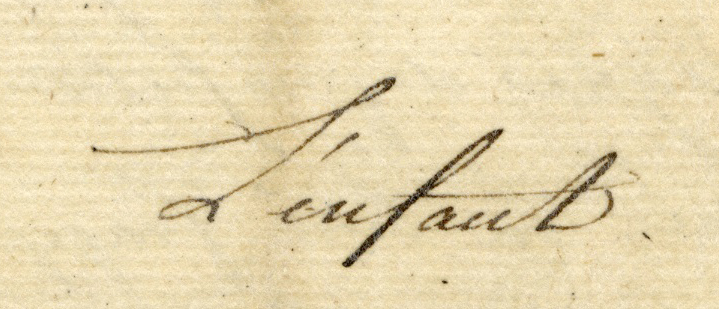
L’Enfant’s signature
June 10, 1783The Society of the Cincinnati Archives
L’Enfant went by either Pierre or Peter but rarely included his full name in his signature. He signed only his last name to the June 10, 1783, letter to General Steuben in which he proposed his designs for the Society of the Cincinnati’s emblems of membership.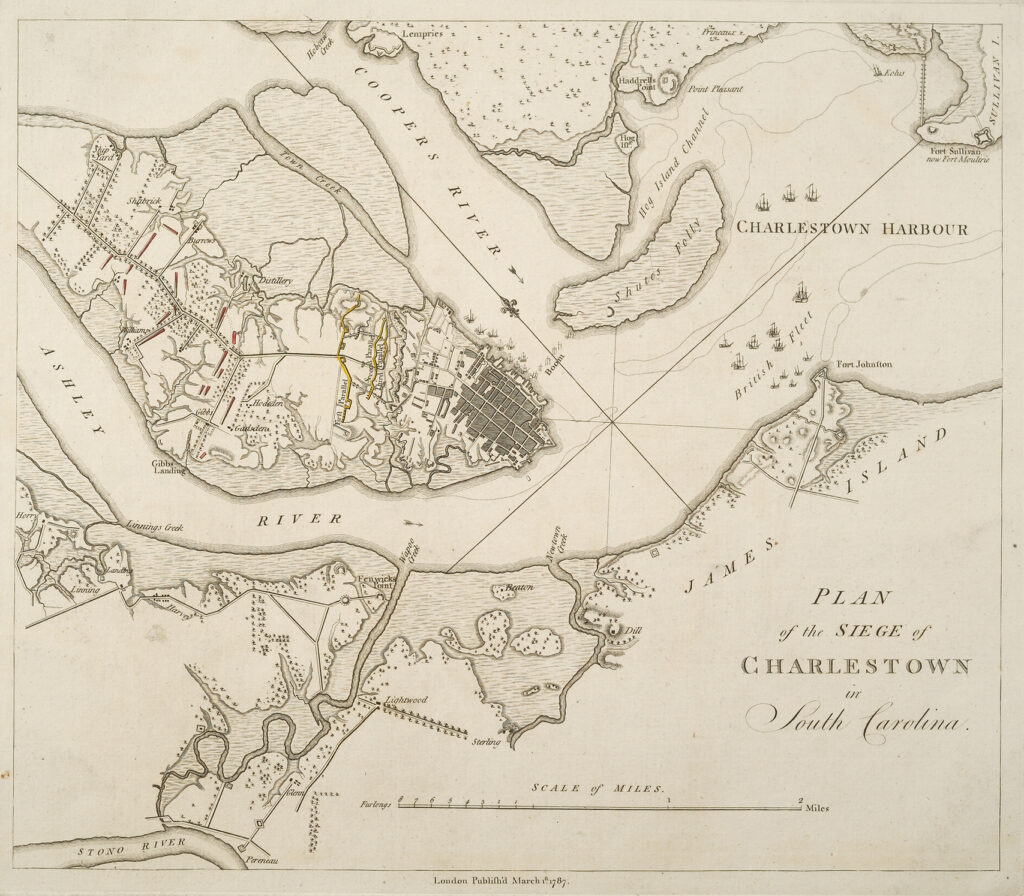
Plan of the Siege of Charlestown in South Carolina
William Faden
London: Published by W. Faden, 1787The Society of the Cincinnati, The Robert Charles Lawrence Fergusson Collection
After arriving in Charleston in 1777 to join the American Revolutionary War, L’Enfant returned to the city during the southern campaign and was taken prisoner after the British siege in May 1780.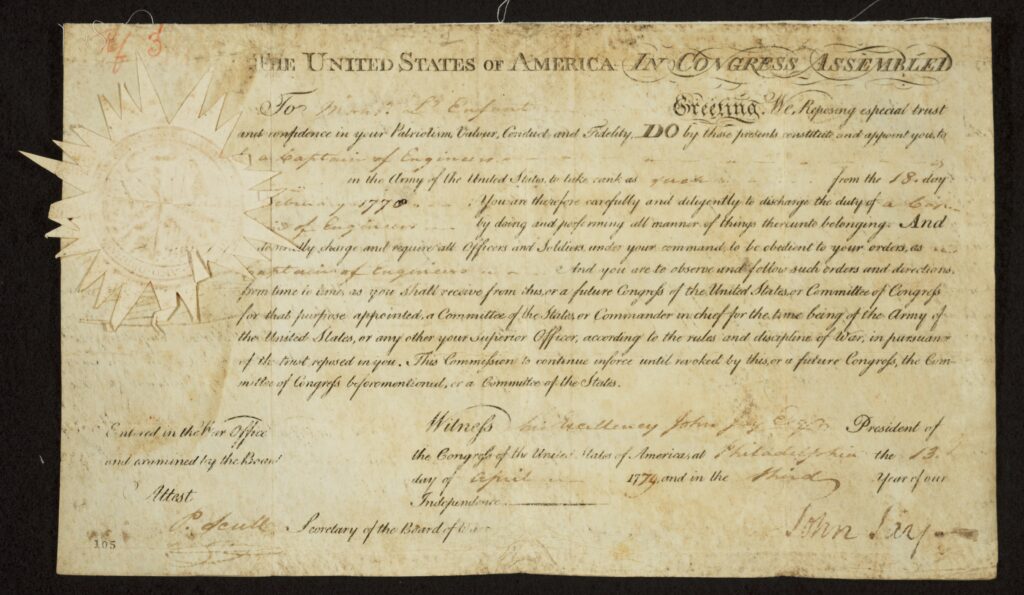
Commission of Pierre L’Enfant as captain of engineers in the Continental Army
April 13, 1779Digges-L’Enfant-Morgan Papers, Manuscript Division, Library of Congress, Washington, D.C.
L’Enfant’s first commission as an officer in the Continental Army came two years after his arrival in America. In April 1779 Congress appointed him a captain in the Corps of Engineers. At the end of the war, he was promoted to major—a title he used for the rest of his life.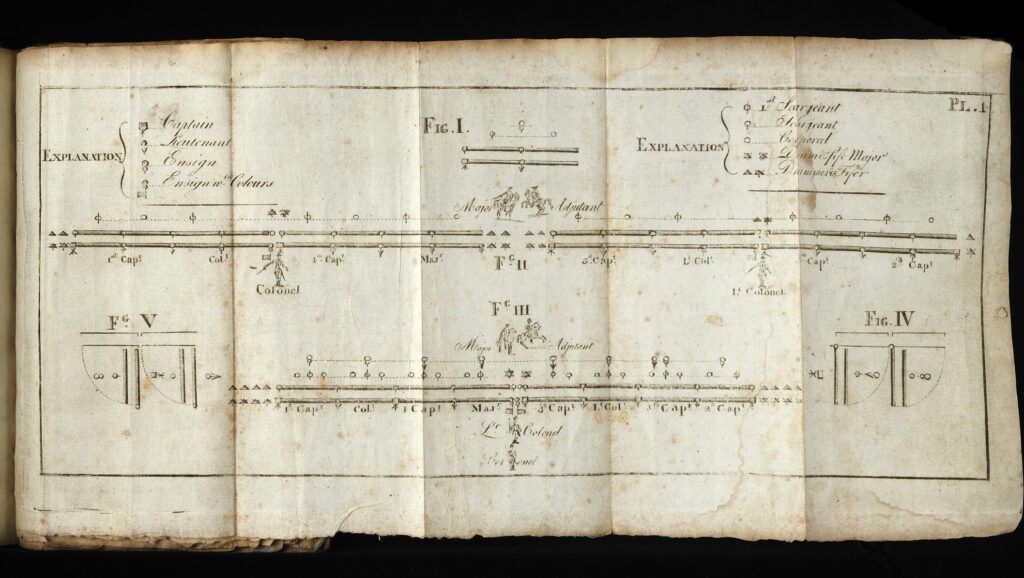
Plate 1 fromRegulations for the Order and Discipline of the Troops of the United States
Pierre L’Enfant, artist
Philadelphia: Styner and Cist, 1779The Society of the Cincinnati, Gift of the Society of the Cincinnati in the State of New Jersey, 2005
Steuben selected L’Enfant to draw illustrations of drills and troop movements to further clarify the instructions in Regulations for the Order and Discipline of the Troops of the United States. The book included eight folding plates engraved from L’Enfant’s watercolor drawings.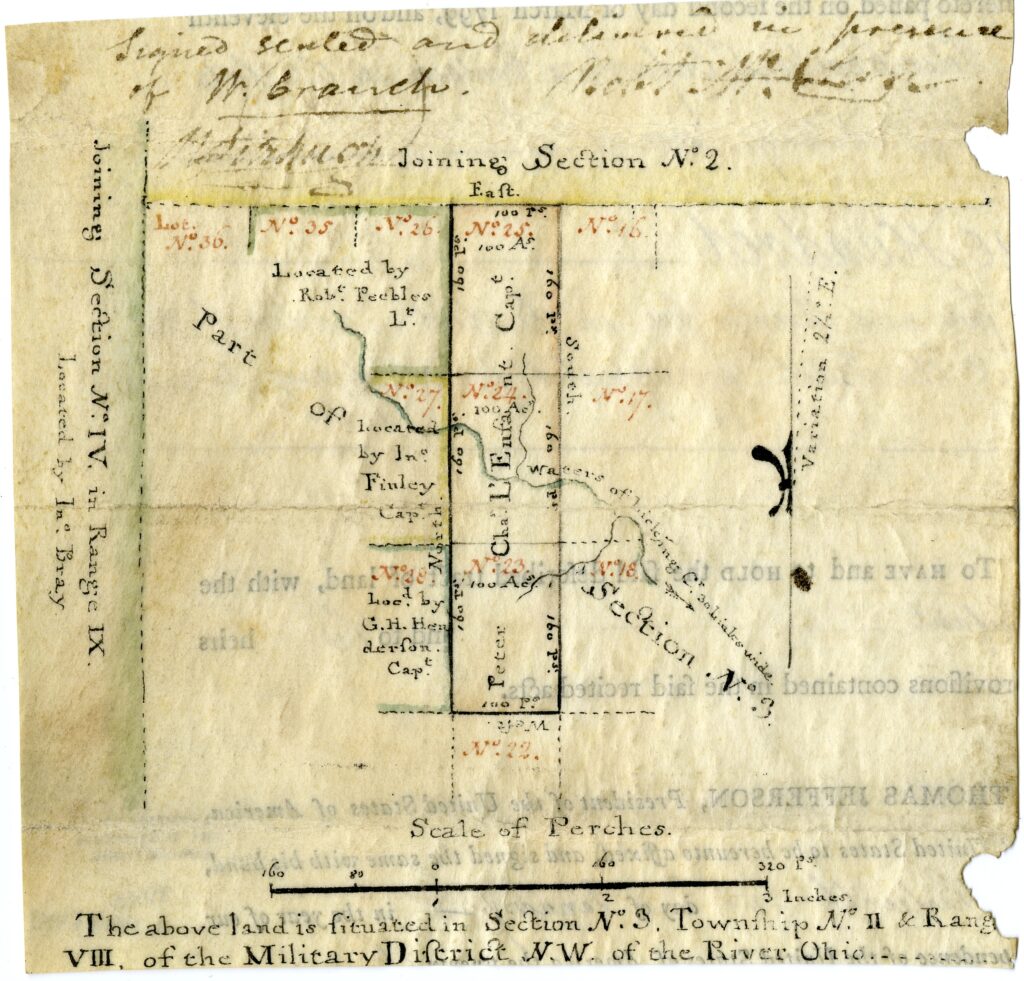
Map of land granted to Pierre L’Enfant
ca. 1803The Society of the Cincinnati, The Robert Charles Lawrence Fergusson Collection
In recognition of his Revolutionary War service, the United States granted L’Enfant three hundred acres of bounty land in the U.S. Military District in present-day Ohio, but he never visited or lived on the land. This map of the land was drawn on the back of a portion of L’Enfant’s parchment deed to the land signed by President Thomas Jefferson on January 13, 1803.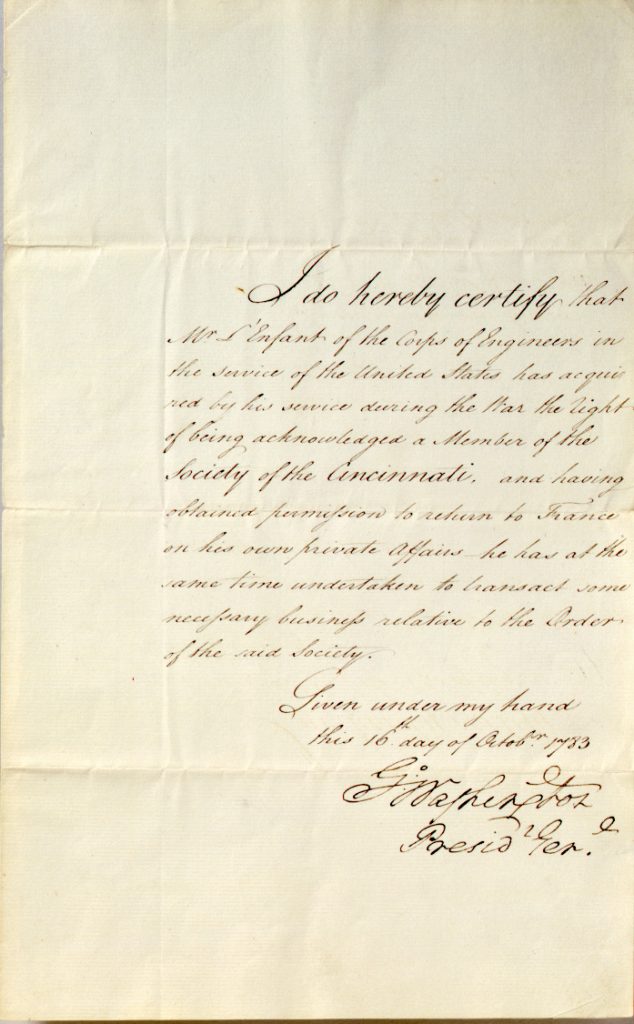
Society of the Cincinnati membership certificate of Pierre L’Enfant
October 16, 1783The Society of the Cincinnati Archives
L’Enfant was among the 2,200 original members of the Society of the Cincinnati, as attested by this handwritten certificate signed by George Washington. L’Enfant received the document on the eve of his trip to France to have the first Society insignias made—one year before the first printed membership certificates were issued.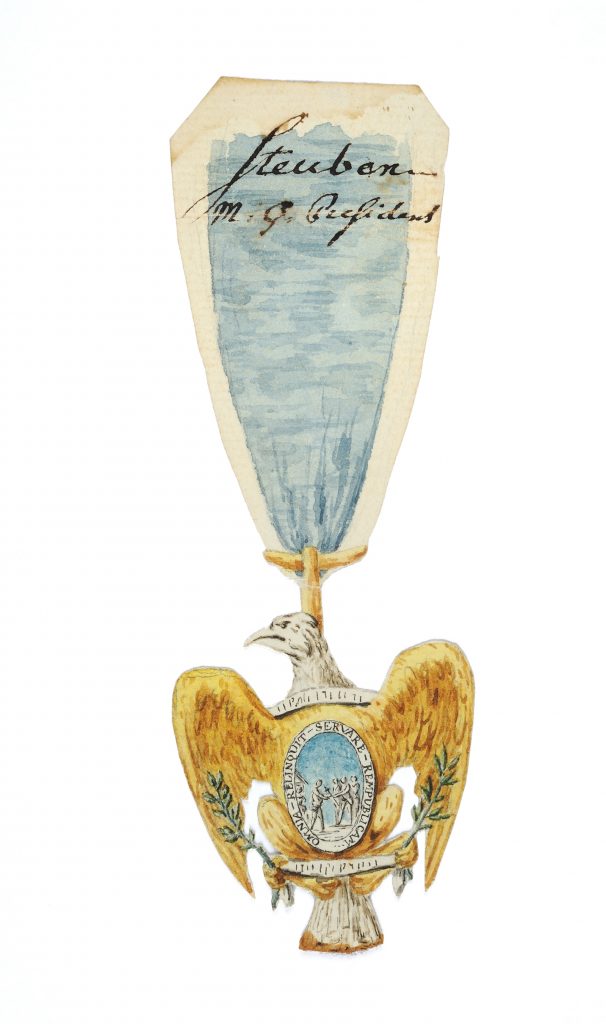
Design for the Society of the Cincinnati Eagle insignia
Pierre L’Enfant
1783The Society of the Cincinnati Archives
L’Enfant submitted this watercolor design for the Society Eagle in June 1783 at the request of General Steuben, who signed the top as interim president. The drawing is double-sided, as the gold insignias would be.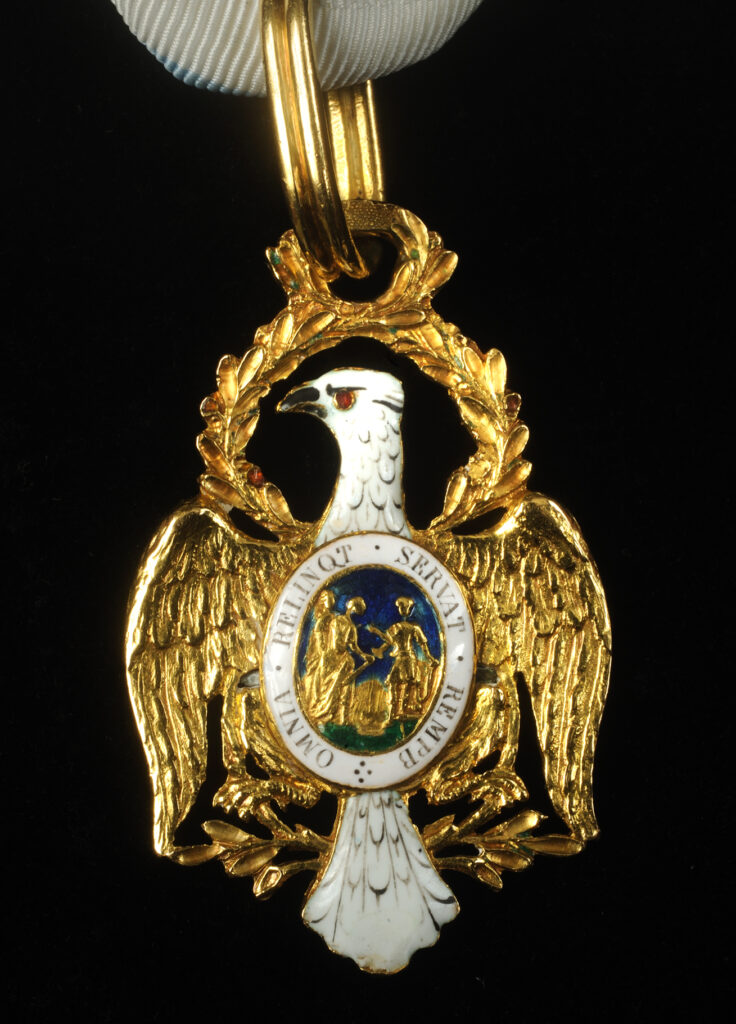
Society of the Cincinnati Eagle insignia
Nicolas Jean Francastel and Claude Jean Autran Duval, Paris, France
1784The Society of the Cincinnati Collections
To have his Eagle design executed in gold, L’Enfant secured George Washington’s permission to travel to Paris, where he commissioned craftsmen Francastel and Duval to make 225 insignias. The design was altered slightly for manufacture—a laurel wreath was added over the eagle’s head, the banners were removed and the angular head and wings were softened.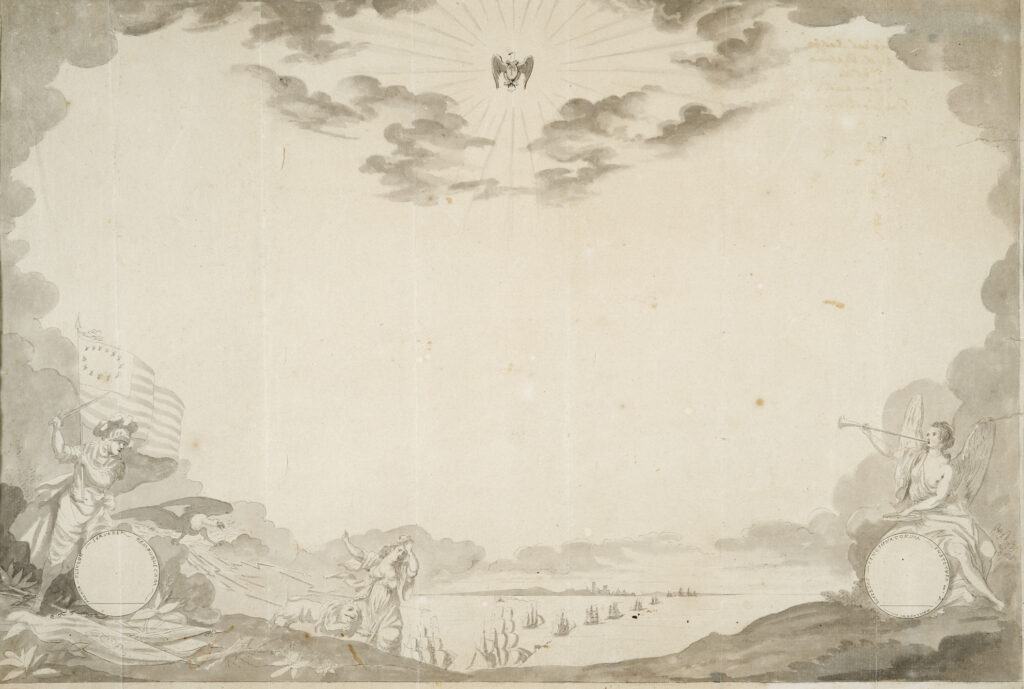
Design for the Society of the Cincinnati membership certificate
Pierre L’Enfant
1783The Society of the Cincinnati Archives
For his design of the Society’s membership certificate, known as the diploma, L’Enfant combined recognizable American iconography with his new imagery for the Society to celebrate American independence. On the left, an armored warrior stands next to an American flag and tramples enemy standards, while a bald eagle shoots lightning bolts at a cowering lion and figure of Britannia. On the right, the figure Fame proclaims the American victory. L’Enfant’s design of the Eagle insignia radiates over the scene, and his design for both sides of the medal would later fill in the empty circles on either side.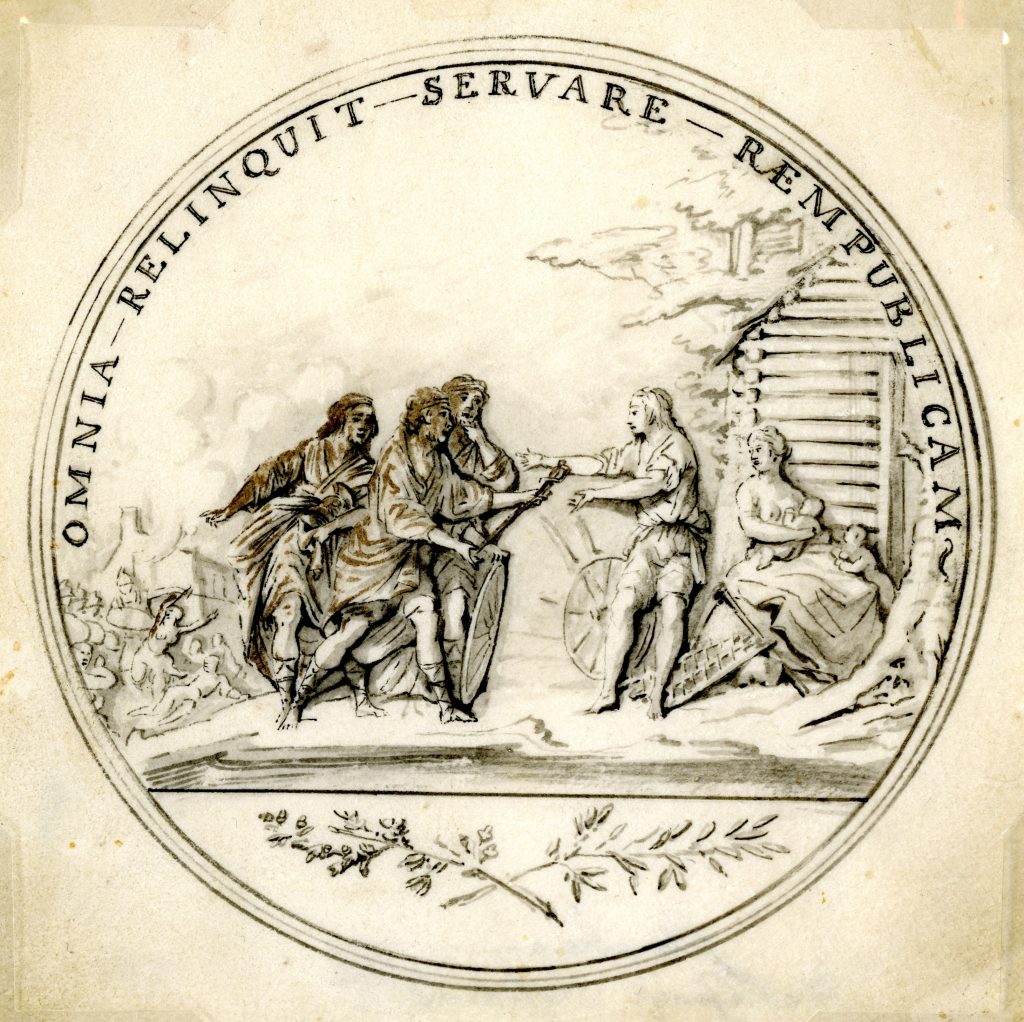
Design for the Society of the Cincinnati medal (obverse)
Pierre L’Enfant
1783The Society of the Cincinnati Archives
The obverse of L’Enfant’s ink-and-wash design for a Society medal depicts the organization’s namesake, Cincinnatus, receiving a sword from Roman senators. The reverse (not shown) depicts Cincinnatus having returned victorious to his plow with the figure of Fame overhead.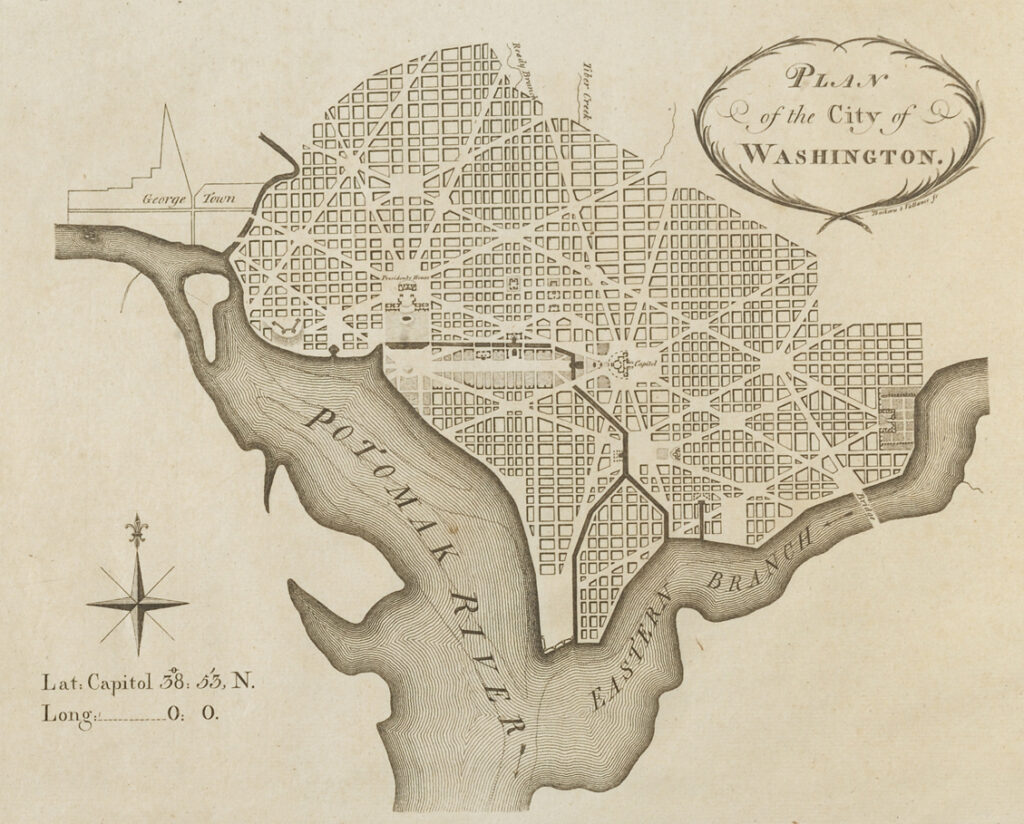
Plan of the City of Washington
James Thackara and John Vallance, engravers
[Philadelphia, 1792]The Society of the Cincinnati, The Robert Charles Lawrence Fergusson Collection
L’Enfant’s plan for the federal city of Washington was first published in the March 1792 issue of the Universal Asylum, and Columbian Magazine—one month after L’Enfant resigned from the project.